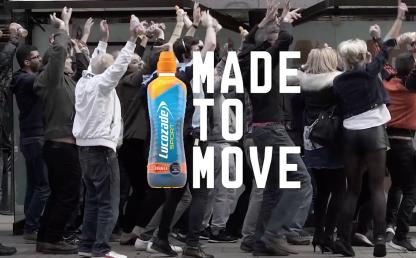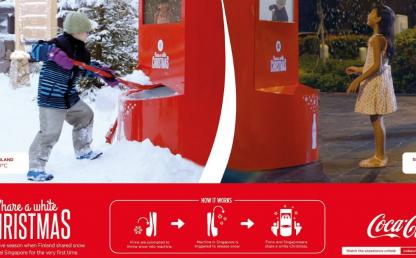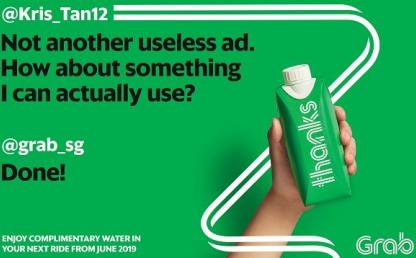Finance: 5 great experiential marketing campaigns

Companies such as insurance providers and banks are often seen as stiff, distant, and impersonal. Let’s be honest, typically, how exciting is it for customers to sign up for a bank account or insurance policy? While there are clearly benefits for customers, companies struggle to connect with their audiences, be it on their website, social media accounts, through email marketing, or even using television commercials.
The challenge is to translate a traditionally unexciting service, into something that matters and is important to people. That's where experiential marketing comes in. If you are in one of these industries, you can create brand experiences through engagement marketing in order to bring your business to life in the target audience's mind. You engage consumers directly, inviting and encouraging them to interact with your brand (read more about our experiential marketing tips).
If you're wondering how this can be applied in the financial industry for brand activation, here are 5 great examples of successful campaigns.
1. Progressive Insurance: Pop-up biker salon - US
Progressive Insurance wanted to provide an engaging experience in order to promote their motorcycle insurance for the AME Awards and also to raise money for the Movember foundation. They did this by creating a pop-up biker salon called Flo's Chop Shop, offering everything from boot polishing to a gentleman's shave. 9,000 attendees were serviced by Flo's Chop Shop.
The campaign delved into the passions of bikers and created a novel experience they could relate to in order to connect and thus promote their motorcycle insurance. The program received 778,000 social media impressions and they raised nearly $92,000 for the Movember Foundation and men's health awareness.
2. Bank of New Zealand: $hred – New Zealand
Bank of New Zealand implemented a shock tactic in the form of experiential marketing in order to raise awareness about the amount of money that was being wasted on unnecessary or ill-thought-out mortgage applications.
This campaign came about at a time where said mortgage applications were declining and the market was slow. They partnered with the Reserve bank and shredded large amounts of money which they put on display in their bank locations and mailed out to home loan customers in the amount of $1,000 per display or mailing pack.
The campaign allowed people to view the wasted money as an object they could visibly view and handle, rather than it being a meaningless figure. As a result, conversations about home loans were provoked and national headlines about the campaign were also gained. This triggered Bank Of New Zealand’s biggest year of lending. Click here to watch the video of the campaign.

3. Emirates NBD: The Beautiful After - Emirates
Emirates NBD recognized that young people were not thinking about or prioritizing their pensions, mostly because they are focused on saving for a house or other investments. To tackle this, they launched a campaign that enabled young people to see what their faces would look like 30 years in the future.
The process was filmed and worked to prompt younger consumers to think about how they will live in the future. This campaign helped to get consumers thinking about their personal future and how their decisions now will impact it.
As a result, NBD experienced a 15% increase in the number of retirement plans sold and an improvement in brand scores. This was a successful campaign in order to engage their target audience in a fun and purposeful way.
4. Allstate: Protect it or lose it - US
Allstate wanted to promote home insurance so that people were purchasing it before a disaster or incident, rather than as a reactionary measure. To do this, they wanted to emphasize the actual value of everyday household items to get customers to think about these things in a new way.
They created a quiz-show style competition, whereby the general public could guess the value of certain items (a refrigerator, a television, a bed, etc). The campaign was designed to get people thinking about the worth of their personal items and to imagine a scenario where they were damaged or destroyed.
The campaign surpassed the expected targets, reaching 57 million impressions. Furthermore, the microsite was able to produce over 500,000 sweepstakes. It was a fun, interactive, and educative experience supported by an influencer, that helped increase awareness about the actual value of home insurance. They illustrated, in terms that were tangible to the customer, why home insurance is a good investment.
5. Scotiabank SCENE - Canada
Next up is Scotiabank, the Canadian bank used a cinema loyalty scheme to attract younger customers to join. They launched a SCENE card which awards owners with points when they use it. The points can then be redeemed for movie tickets.
In order to get the word out about the new card, Scotiabank bought out an entire cinema and moviegoers were let in free. When trying to pay for admission, they were denied and showed footage about Scotiabank’s “feeling of free”. A year later, Scotiabank followed up with another tactic where movie goers were given makeovers so they would feel like they were in a movie about “the feeling of free”.
The message was amplified with the use of digital ads, social media competitions, and free tickets for unique outdoor movie events. The SCENE scheme succeeded in increasing debit card holders by 47.2% and credit card holders by 52.1%.
How Can You Use Experiential Marketing for Your Financial Company?
Experiential marketing campaigns allow you to reach your customers in a new and interesting way. You are able to engage with them and bring your marketing message to life. Whether it’s showing people why they need your product or service, or just increasing awareness of your brand, you can do so in a way that is fun and relatable.
As we have seen in these campaigns, doing so can bring large returns when dealing with a financial product or service which may not be particularly exciting at face value.
If you have any questions or would like to learn more about how you can use experiential marketing, you can contact our experts today (info@whycatalyst.com / +852 2815 6121).
 Insights
Insights

